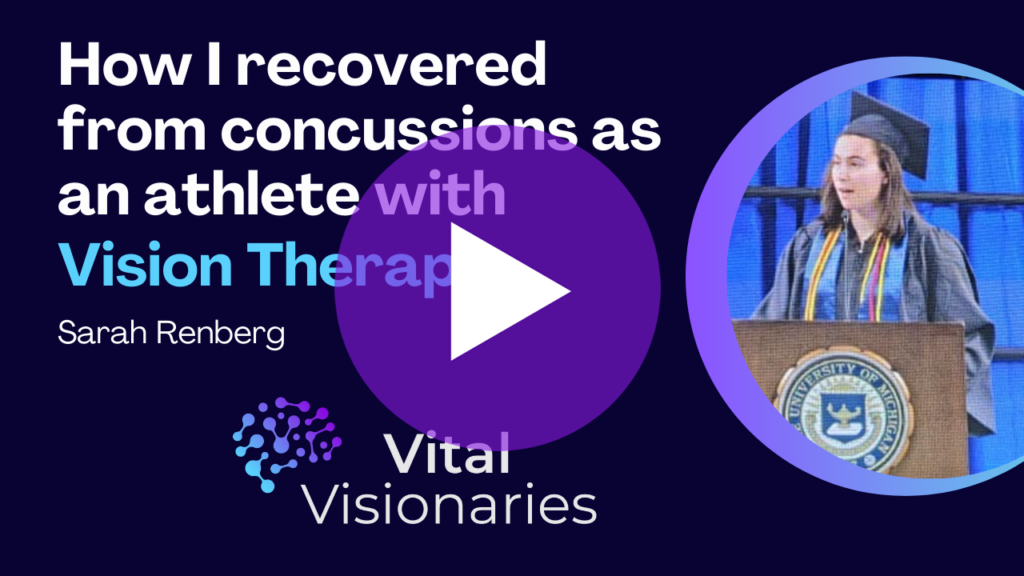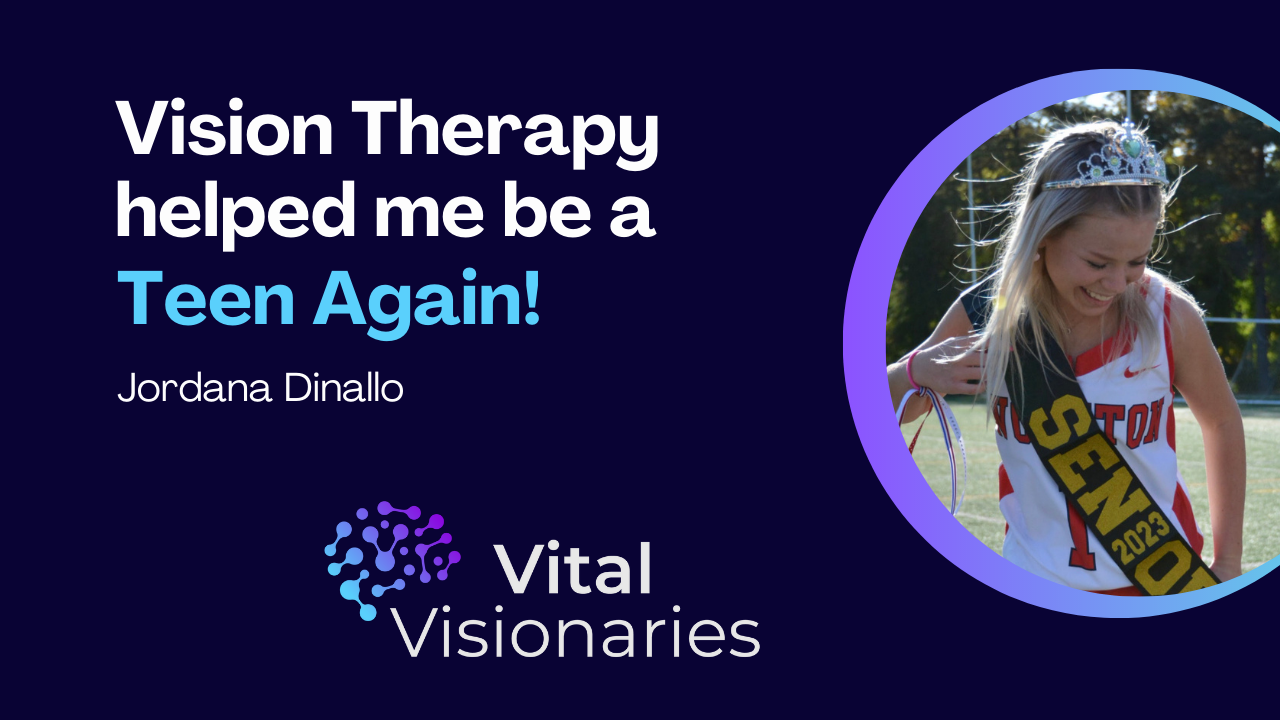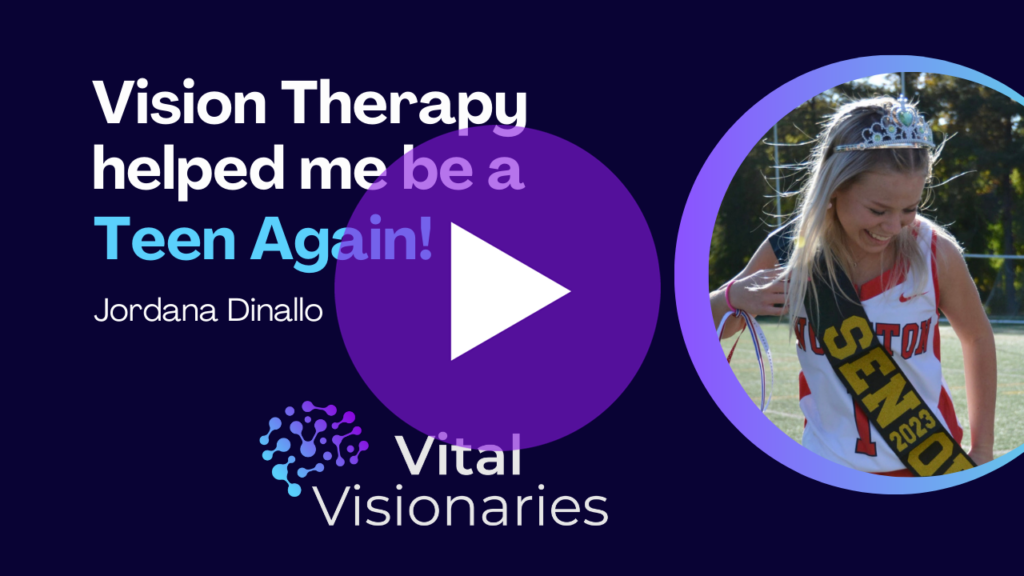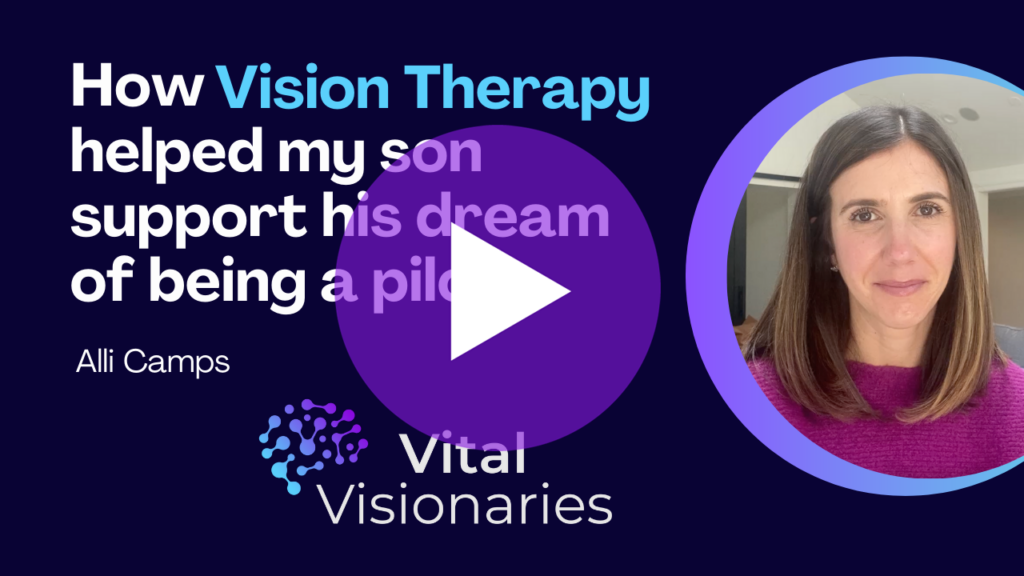Vision Therapy
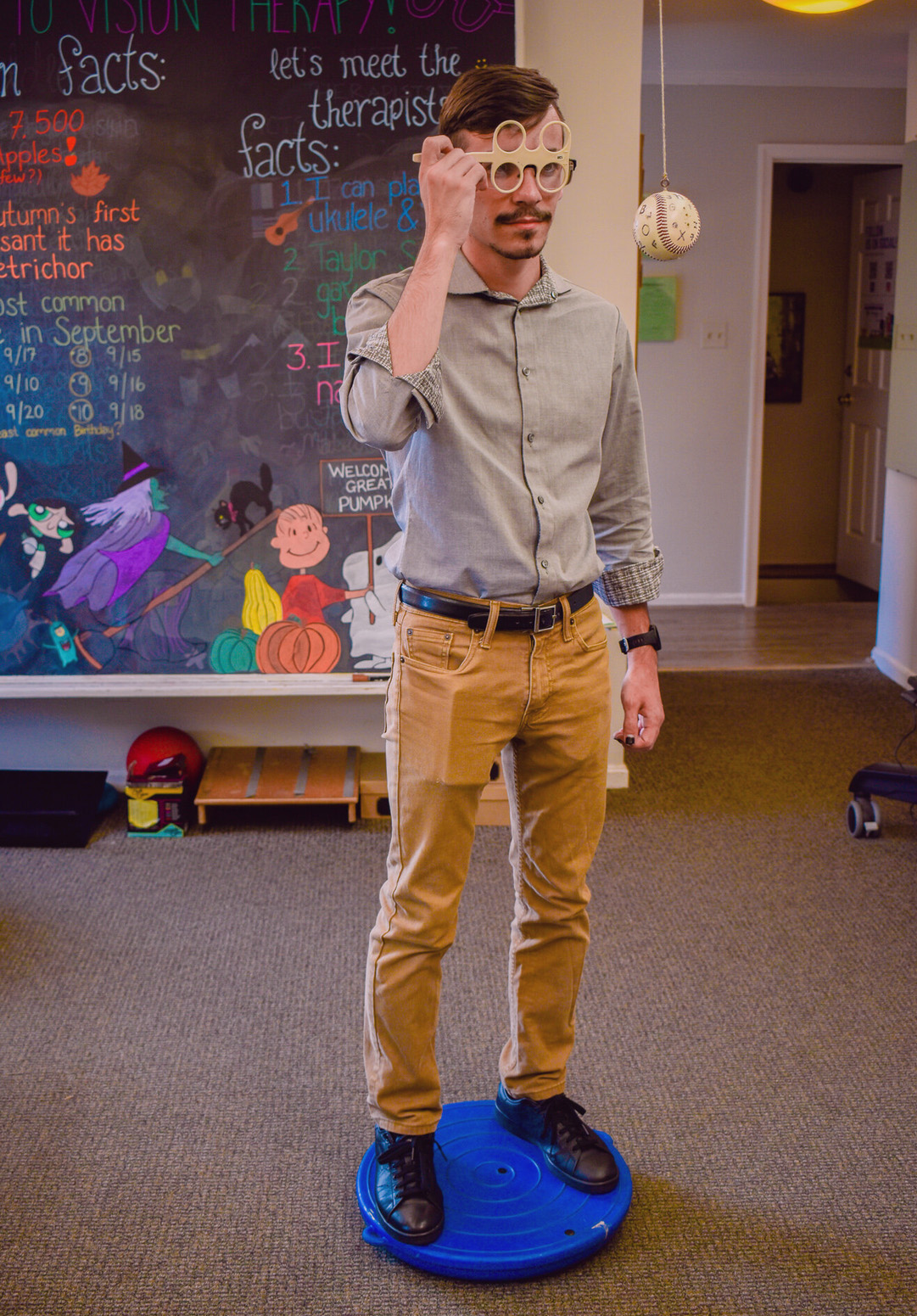
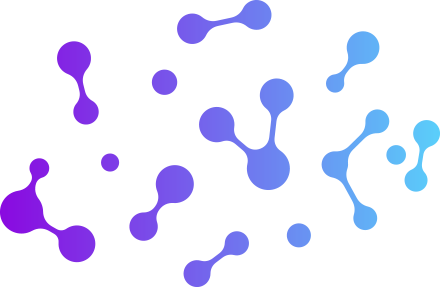
What is Vision Therapy?
Vision Therapy = Physical Therapy for the brain through the eyes!
Vision Therapy is an individualized program recommended by your doctor to develop, retrain, or rehabilitate the brain, eyes, and body to work more efficiently together as a team. Vision Therapy is designed to develop efficient visual skills and visual processing to correct visual-motor and perceptual-cognitive deficiencies and enhance the brain’s ability to control:
- Eye tracking
- Eye alignment
- Eye focusing abilities
- Eye teaming
- Visual processing
- Eye movement control
At VisionFirst, the learning that takes place through this carefully prescribed sequence of procedures is always programmed and supervised by a doctor to ensure optimal quality control. Vision Therapy is prescribed after a comprehensive visual system evaluation, based on the results of standardized testing, the needs of the individual, and the presenting signs and symptoms. The use of lenses, prisms, filters, specialized instruments, virtual reality systems, eye tracking software, and computer programs are an integral part of Vision Therapy.
As visual skills and abilities are improved through practice and repetition, they are ultimately integrated into the body and impact movement and cognitive functioning in your day-to-day life.
Research indicates that office-based Vision Therapy combined with home reinforcement proves to be the most effective treatment model. Numerous program options are available at VisionFirst in terms of treatment frequency and duration. While the majority of our patients are relatively local to Metropolitan DC, we do see many patients from out of state or out of country for intensive “boot camp” treatments. In most cases, we place an emphasis on home training to support what has been learned in office, but do offer treatment options consisting of solely home, office, and teletherapy, or any combination of these, for portions of Vision Therapy.
Eyesight vs. Vision
There is so much more to vision than purely 20/20 eyesight!
Eyesight involves the ability of the eye to distinguish small details, such as seeing what is written on the chalkboard in a classroom, on the letter chart in an eye exam, or on a street sign while driving. Eyesight is only one component of vision.
Vision is far more intricate and complicated
Vision has to do with how the brain coordinates and processes the information coming in through the eyes. Vision is how the eyes work together, move together, focus together, and make sense of and process what they see. Vision is the ability to interpret and extract meaning from the information that exists in your world.
Many children and adults can demonstrate perfect 20/20 eyesight and still have a critical and interfering vision problem!
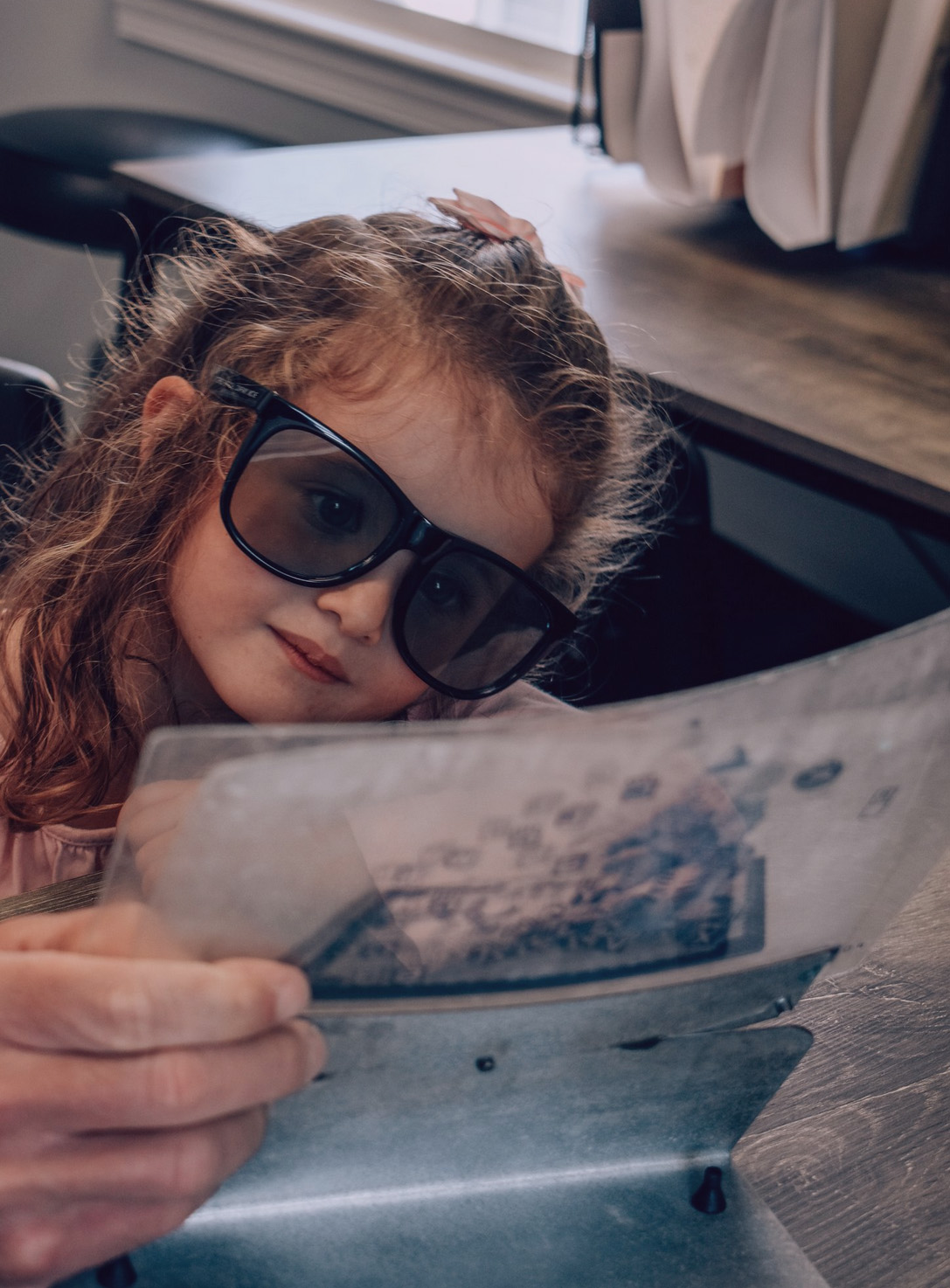

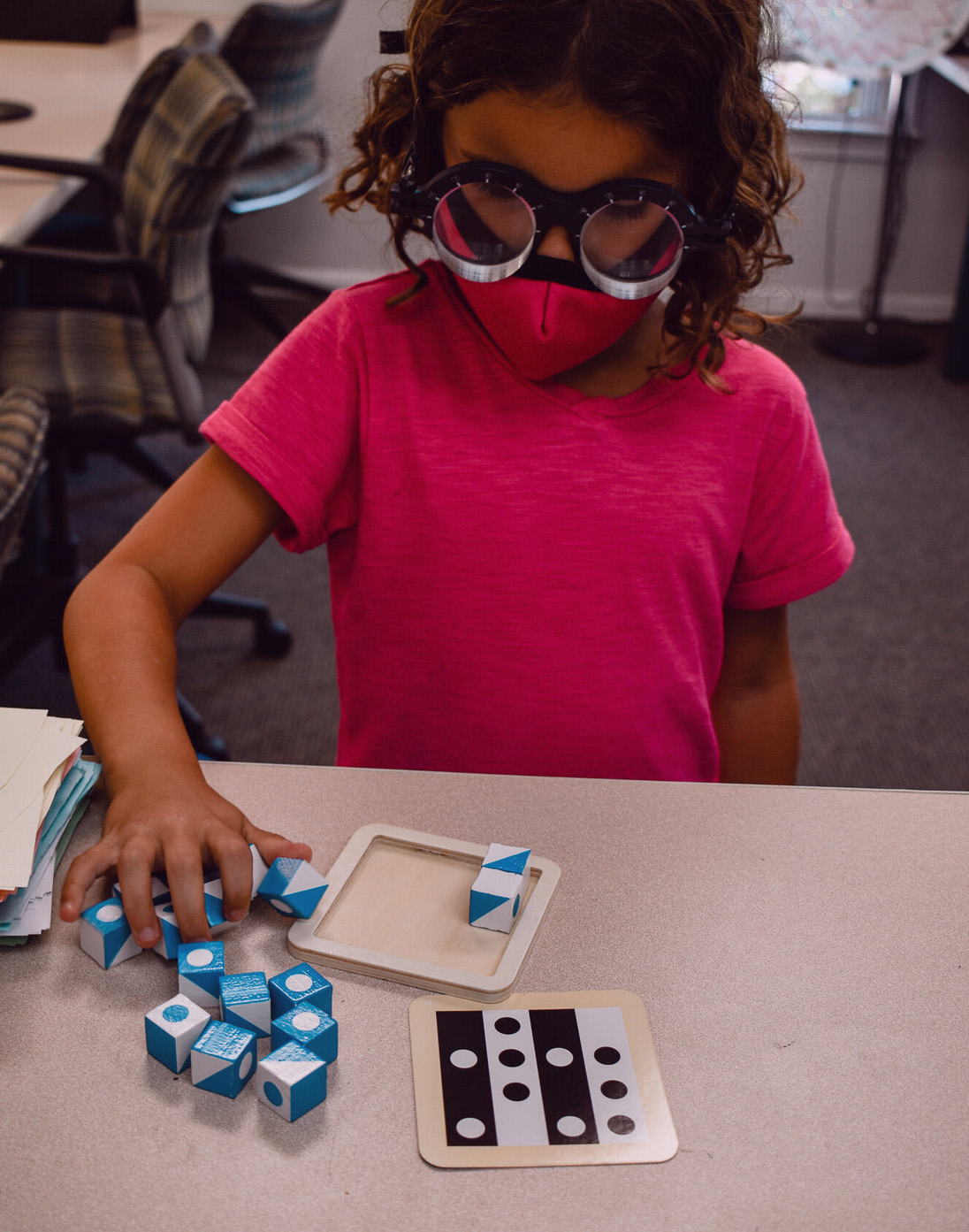
Who Benefits from VT?
Whether you’re a weekend athlete or a serious professional, Vision Therapy can give you a competitive edge by improving depth perception, hand-and-eye coordination, eye tracking, visual processing, and reaction time.
Double vision, headaches, blurred vision, eye strain, confusion related to visual tasks, difficulty reading, etc. can result after trauma to the head/brain or after a stroke. Vision Therapy combined with co-managed rehabilitative care can increase independence, balance, reduce symptoms, and often enhance the benefits from speech, occupational, and physical therapies.
Myopia (nearsightedness) can be controlled safely and effectively for a majority of people! This is one of the best kept secrets in health care today. Without the risks and expense of experimental surgery, nine out of ten people can slow down their vision from worsening and in many cases actually reduce their prescription. Other techniques used may include fitting with specialized contact lenses, reducing eye strain, and nutritional counseling to control metabolic risk factors.
Muscle contraction “tension” headaches while reading and doing deskwork may not be from physical stress. Instead, they may be caused by tired, overused, strained eyes. Vision Therapy offers safe, on-going, and permanent relief – versus a lifetime of potential medications and side effects.

Who Benefits from VT?
If there is suspicion of a vision problem, the first step is to schedule a developmental vision evaluation to evaluate the visual skills and abilities essential for reading, learning, and life. If indicated, an individualized Vision Therapy treatment program will be prescribed to meet the specific goals of the patient.
The way that eyes move, work together and focus can affect your ability to read, process and understand sensory information. Studies have shown that deficiencies in any of these areas can lead to a significant handicap in learning. Vision Therapy can help overcome these problems – improving the ability to read, learn, and thrive.
It’s never too late to treat a lazy eye! Amblyopia, or lazy eye as it is commonly called, is a condition where there is a loss of sight. There are various causes for it. By definition, it cannot be corrected with glasses or contact lenses. Oftentimes, the condition can be corrected or greatly improved with the learning that takes place through Vision Therapy. And, while for many patients this condition is often undetected for years, studies show that active Vision Therapy can have much better outcomes than simply patching an eye, and is effective at all ages!
Strabismus is a condition when you are unable to align both eyes simultaneously under normal visual conditions. Contrary to old wive’s tales, it rarely corrects itself and children do not outgrow it over time. Surgery can sometimes be done to attempt to align the eyes more closely for cosmetic reasons, but very rarely does a functional cure occur without establishing the new neuronal connections and eye-brain integration that needs to take place via Vision Therapy.
By using a combination of Vision Therapy, prism, and/or prescription lenses, depending on the case, strabismus can often be corrected without surgery. Even if there has been a previous surgery, or even multiple surgeries, Vision Therapy can improve the coordination of the eyes together as a unified team and eliminate yours or your child’s unnecessary struggling.
Even if your workstation is designed correctly, many people with 20/20 eyesight and healthy eyes experience blurred or uncomfortable vision when looking at screens and digital devices. These symptoms often result from functional visual skills that break down and fatigue with extended screen use. Vision Therapy, along with carefully prescribed digital performance lenses, is an effective treatment for these problems to minimize the damage that screens have on vision
Our developmental optometrists collaborate with occupational therapists to help children with Autism Spectrum Disorder.
Vision development is often delayed in children with epileptic disorders, cerebral palsy, autistic behaviors, PDD or attention deficit disorder (ADD). Vision therapy can be life changing for helping children build and integrate their sensory systems for better learning and function in the activities of daily living.
Symptoms Checklist
Rate each symptom from 0-4:
(0=Never, 1=Seldom, 2= Sometimes, 3=Frequently, 4=Always)
- Blur when looking at near
- Double vision, doubled or overlapping words on page
- Headaches while or after doing near vision work
- Words appear to run together when reading
- Burning, itching or watery eyes
- Falls asleep when reading
- Seeing and visual work is worse at the end of the day
- Skips or repeats lines while reading
- Dizziness or nausea when doing near work
- Head tilts or one eye is closed or covered while reading
- Difficulty copying from the chalkboard
- Avoids doing near vision work such as reading
- Omits (drops out) small words while reading
- Writes up or down hill
- Misaligns digits or columns of numbers
- Reading comprehension low, or declines as day wears on
- Poor, inconsistent performance in sports
- Holds books too close, leans too close to computer screen
- Trouble keeping attention centered on reading
- Difficulty completing assignments on time
- First response is “I can’t” before trying
- Avoids sports and games
- Poor hand/eye coordination, such as poor handwriting
- Does not judge distances accurately
- Clumsy, accident prone, knocks things over
- Does not use or plan his/her time well
- Does not count or make change well
- Loses belongings or things
- Car or motion sickness
- Forgetful, poor memory
Tally up your points:
20-24 points: Suspicious for a likely treatable vision problem.
25 points or more: Refer for care and schedule an evaluation.
Book An Evaluation
Contact us now to learn how you can book a vision evaluation and get started on your journey towards optimal vision.


